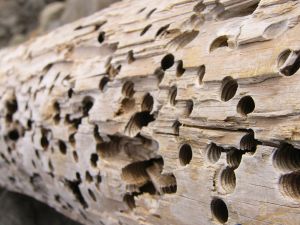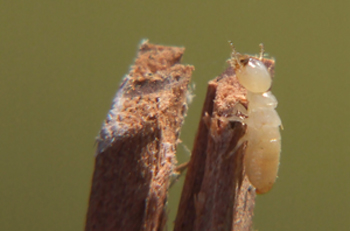 No one wants to see termites in or around their home.
No one wants to see termites in or around their home.
If you believe you may have an issue with termites, what should you do? And do you know how to identify the type of termite you have? Figuring out which species of termite you’re plagued with is crucial to successfully treating the pests and it can be harder than you think. There’s more than one “kind” of termite out there and your home is likely vulnerable to several different varieties.
There are three main types of termites recognized as common home pests in the United States:
Subterranean Termite:
Subterraneans are the most common type of termite seen in U.S. homes. They live in massive colonies and enter dwellings by burrowing up through the ground. They’re often difficult to detect until they’ve caused a lot of structural damage. Formosan termites are a common type of subterranean termite that are found in the Southeastern U.S.
Drywood Termite:
Drywood termites eat, well, dry wood! They don’t need contact with the ground and are often found in attics, furniture, and in new construction. They’re common all across the U.S. and can live in much colder climates than their Subterranean peers.
Dampwood Termite:
Dampwood termites are less common than the other two varieties because they need high-moisture environments to thrive. They’re found most often in the Pacific Northwest and they’re less likely to invade homes since they only eat very wet wood. They’re often seen in wooded areas and in rotting tree stumps.
Identifying the Termites in Your Home
Unless your home contains wood that is constantly wet, rotting, or soggy you can be fairly certain you do not have Dampwood Termites. Unfortunately, that still leaves dozens of species and sub-species of Drywood and Subterranean termites to contend with.
Drywood termites leave a lot of clues. Their excrement is typically hexagonal shaped and one of the most-oft seen signs is the small holes they leave behind in exposed wood. Shavings and tunnels bored with the grain of the wood may mean you’ve got a Drywood infestation. The Western Drywood termite, the most common type in the U.S., have reddish-brown bodies and they swarm in the daytime. They’re most likely to be found in low elevation environments.
Subterranean termites are the most common when it comes to home infestations. They prefer to burrow through the ground to their food source, leaving “mud tubes” behind which can sometimes be seen from above. Usually entering homes through the basement, subterranean termites set up colonies in the tens of thousands and they’re most active in the Spring.
Dealing With a Termite Problem

It’s far easier to prevent termites in the first place than to deal with them once they’ve made themselves at home. Keep your home free of open water (termites get thirsty, too!) and food sources like stacked firewood, untreated decking, and fencing to lessen your risk of a problematic rise in termite activity.


